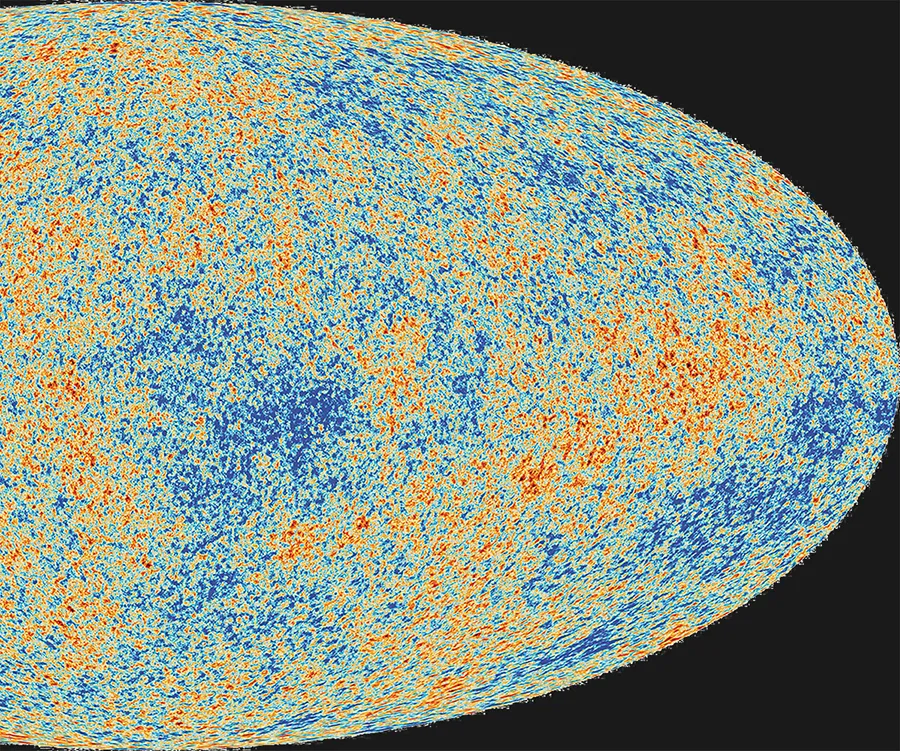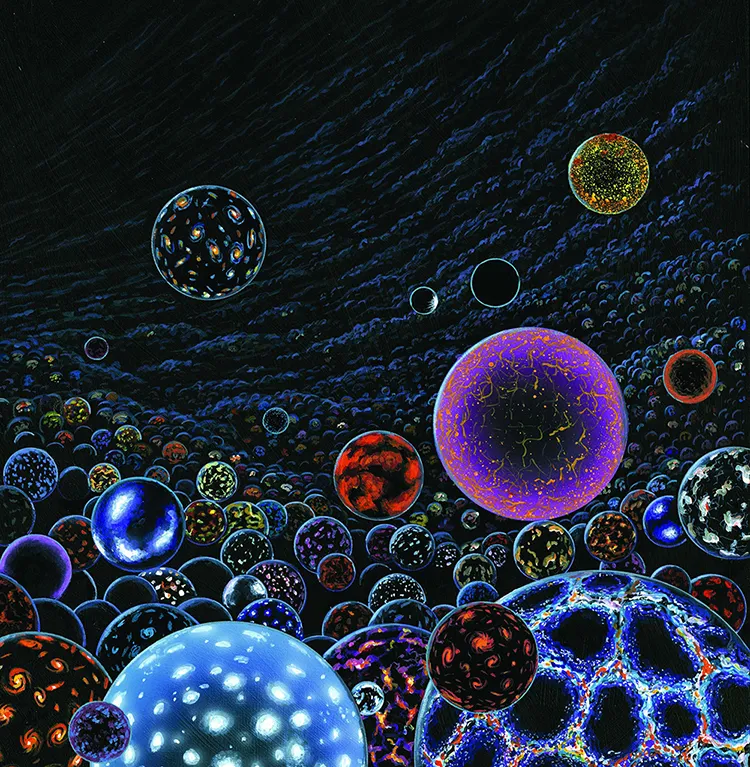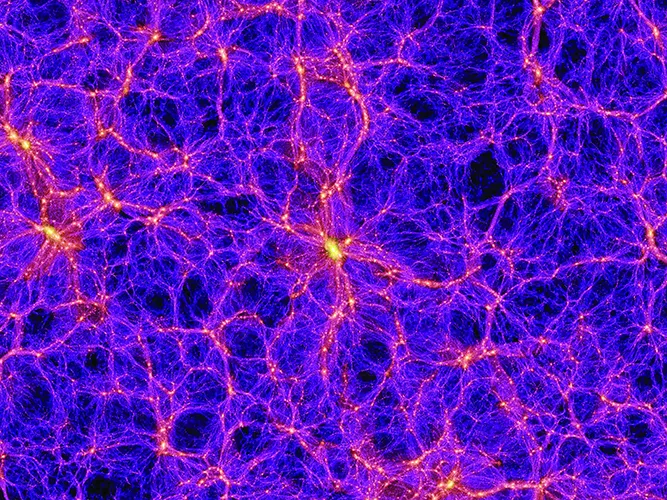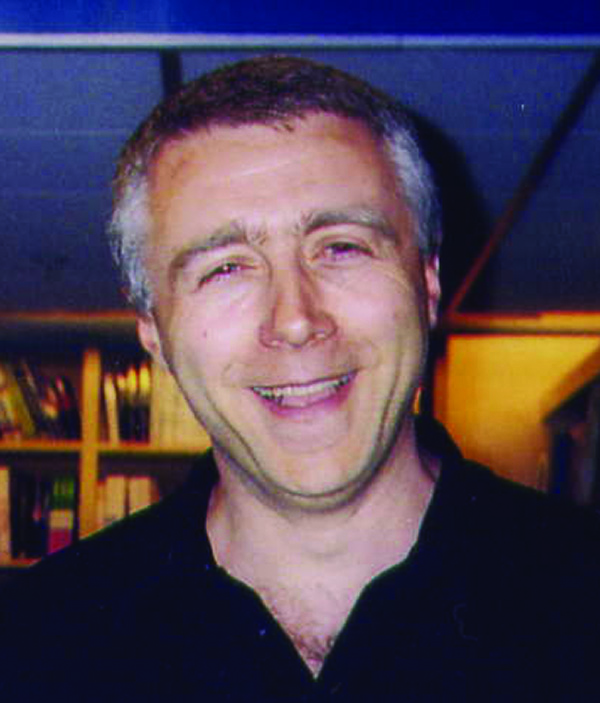What is the evidence for a Big Bang?
The Universe has not existed forever. It was born. Around 13.82 billion years ago, matter, energy, space – and time – erupted into being in a fireball called the Big Bang. It expanded and, from the cooling debris, there congealed galaxies – islands of stars of which our Milky Way is one among about two trillion. This is the Big Bang theory.
A universe popping into existence out of nothing is so bonkers that scientists had to be dragged kicking and screaming to the idea. But the evidence is compelling. The galaxies are flying apart like pieces of cosmic shrapnel. And the heat of the Big Bang is still around us. Greatly cooled by cosmic expansion, this ‘afterglow’ appears not as visible light but principally as microwave radiation – the ‘cosmic background radiation’, which was discovered by radio astronomers in 1965.

Where did the Big Bang happen?
When a stick of dynamite explodes, the detonation occurs in one place and shrapnel flies into the void. In the Big Bang, there was no centre and no pre-existing void, so it didn’t happen at any ‘location’. Space itself popped into existence and began expanding everywhere at once.
Astronomy books often liken the Universe to a rising cake, with raisins representing galaxies. As the cake grows, raisins recede from each other, with no centre of expansion – just like the Big Bang. But of course, a cake has an edge, unlike the Universe, which may go on forever. No analogy is perfect!
Was the Big Bang a one-off?
In the beginning of the Big Bang there was the inflationary vacuum. When it doubled its volume, it doubled its energy; when it tripled its volume, it tripled its energy. If banknotes were like this and you pulled apart a stack, ever more would appear. Physicists call inflation the ‘ultimate free lunch’!
The inflationary vacuum expanded ever faster. But it was a ‘quantum’ thing. And quantum things are fundamentally unpredictable. Randomly, all over the inflationary vacuum, parts of it ‘decayed’ into ordinary, everyday vacuum.

Think of tiny bubbles forming in a vast ocean. In each bubble, the inflationary vacuum disappeared, but its enormous energy had to go somewhere. It went into creating matter and heating it. It went into creating a Big Bang. Our Big Bang Universe is merely one such bubble among a possible infinity of other Big Bang universes in the ever-expanding inflationary vacuum!
To start all this, a chunk of inflationary vacuum of only a kilogram was needed. Incredibly, the laws of quantum theory permit this to pop into existence out of nothing.
What are the problems with the Big Bang theory?
The basic idea – that the Universe began hot and dense and has been expanding and cooling ever since – is incontrovertible. But cosmologists have had to make tweaks to the theory, to account for certain observations.
First, in the standard Big Bang model, galaxies grow by gravitationally pulling in matter. But if this were the only thing going on, it would take much longer than 13.82 billion years for them to form. Astronomers fix this by postulating that the visible stars and galaxies are outweighed by a factor of six by invisible ‘dark matter’, the extra gravity of which speeds up galaxy formation.
Second, the basic Big Bang predicts that the gravitational attraction between the galaxies acts like a web of elastic, slowing cosmic expansion. However, in 1998, astronomers discovered that the Universe’s expansion is speeding up. They fix this by postulating the existence of ‘dark energy’, which is invisible, fills space and has repulsive gravity.

A final tweak to the basic theory is needed to explain why the Universe has the same temperature everywhere. To account for this, astronomers think that the Universe early on was smaller than expected, then underwent a super-fast expansion in its first split-second – an ‘inflation’. This was driven by an ‘inflationary vacuum’, a high-energy version of the vacuum that exists in space today.
Read more about the Big Bang:
- If we made a powerful enough telescope, would we theoretically be able to see the light from the Big Bang?
- What if the Big Bang was not the beginning?
- Who really discovered the heat from the Big Bang?
What happened before the Big Bang?
The twin pillars of modern physics are Einstein’s General Relativity and quantum theory. The former reigns supreme in the large-scale Universe, while the latter orchestrates the small-scale world of atoms and their constituents. They have resisted a merger, which is a problem because, in the Big Bang, the Universe was small.

To understand how it emerged, it is essential to unite Einstein’s theory with quantum theory. The best candidate is ‘string theory’, which views the basic building blocks of reality as tiny strings of mass-energy vibrating in 10-dimensional space-time. Only if we obtain such a theory will we be able to answer the ultimate questions: What is space? What is time? What is the Universe? And where did it come from?
